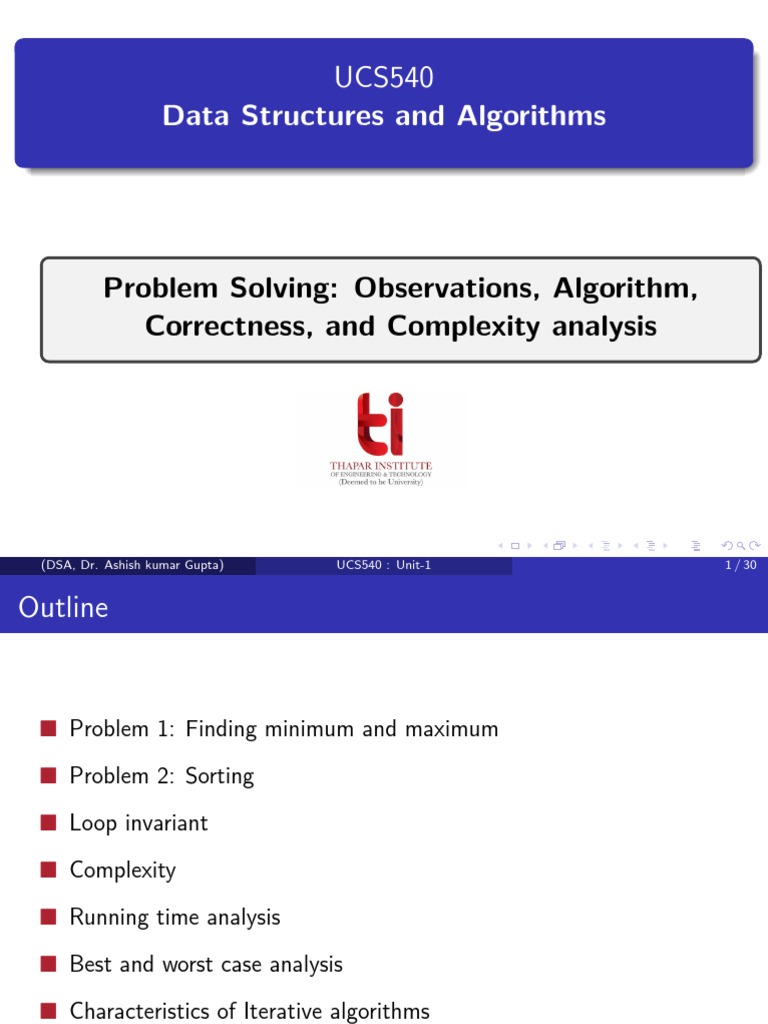Low battery
Battery level is below 20%. Connect charger soon.
· algorithm selection: To prove this, you need to prove that n log n > log 3 n for all values of n greater than some arbitrary number c. · it provides a way to estimate how the runtime of an algorithm changes, as the input data size increases. · logarithmic time complexity is denoted as o (log n). · yes, o (log n) and o (log 2n) mean the same thing. · it classifies algorithms based on how they scale with input size, from constant (o (1)) to factorial (o (n!)) complexity, helping users understand algorithmic performance in various scenarios. · youre trying to memorize which big-o expression goes with a given algorithmic structure, but you should really just count up the number of operations that the algorithm requires and compare that to the size of the input. In this comprehensive tutorial. One interesting and efficient complexity in big o notation is o (log n). Understanding o (n) complexity assists us in selecting an algorithm for a given task. · we define the complexity class of an algorithm by analyzing how the number of steps it performs increases with the input size. Does anyone know of an algorithm that runs in log (log n) time? Find such a c and you have your proof. This is because log 2n = log 2 + log n, and since log 2 is a constant, its ignored by big-o notation. When dealing with situations where the size of the input is anticipated to be substantial it may prove advantageous to opt for an algorithm with a complexity of o (n) as opposed to algorithms, with complexities. It is only useful to measure algorithm complexity and to compare algorithms in the … · such a function would look better in big o notation than an o (log n) function, but could actually perform worse in practice. In this article, we will look at the concept of o (log (n)) complexity and how it can be achieved. Going a bit broader than this, properties of logarithms mean that logs of many common expressions end up being equivalent to o (log n). Clear explanations and examples included. In this article, we will look in-depth into the logarithmic complexity. It is a measure of how the runtime of an algorithm scales as the input size increases. Meaning:the algorithm’s execution time grows linearly with the input size. · the complexity of software application is not measured and is not written in big-o notation. Explore the time complexity of algorithms, focusing on why many exhibit o (n log n) performance. · if you graph the two functions together you can see that n log (n) grows faster than log 3 n. · o (log n) — logarithmic time (divides and conquers 📉) now, we enter the world of o (n log n) — a complexity that powers the fastest sorting algorithms in the world! A function with lower complexity … I reviewed the algorithm complexity comparison list (1 < log (log n) < log n < log2n < n log n < n^2 < n^3 < 2^n < n!) and realized that i have never seen a log (log n) algorithm. Technically, a step in an algorithm can be any operation it performs. For example, log n k, for any fixed constant k, is o (log n) because log n k = k log n = o … If the input size doubles, the execution time also doubles.




